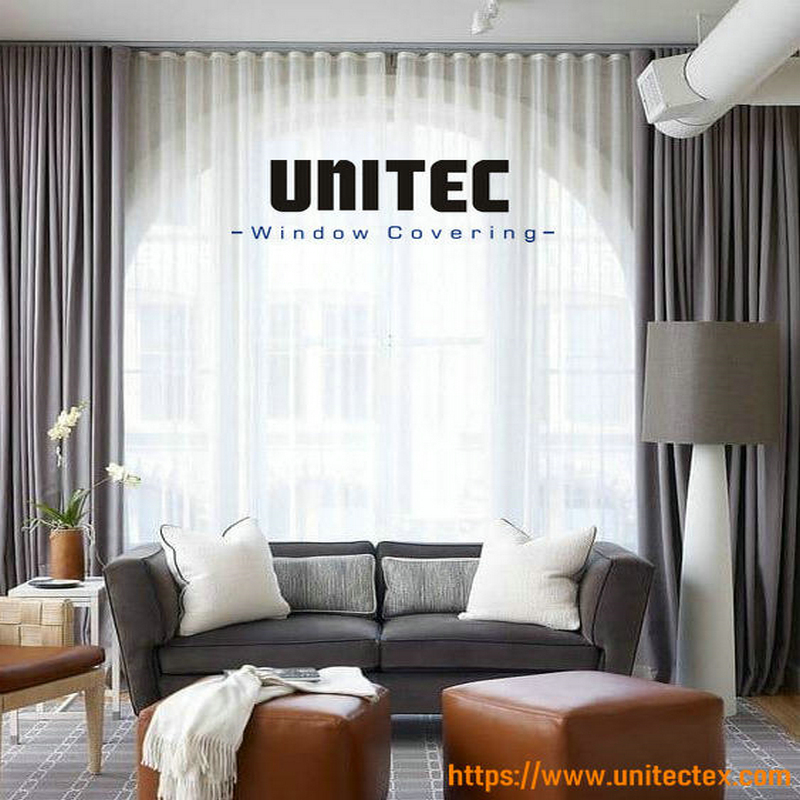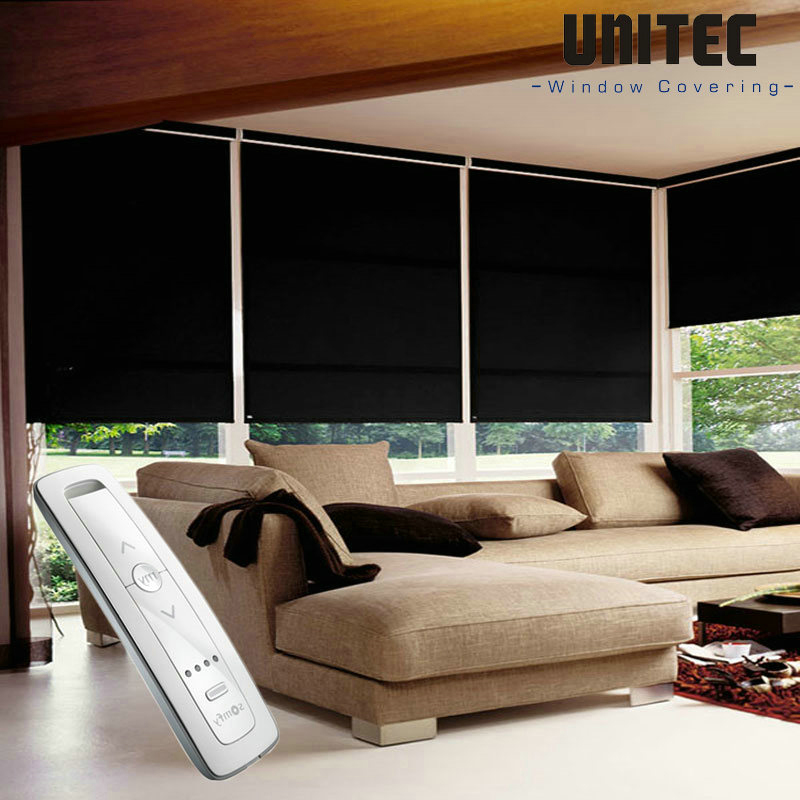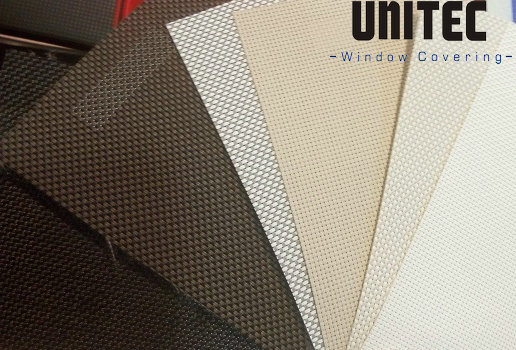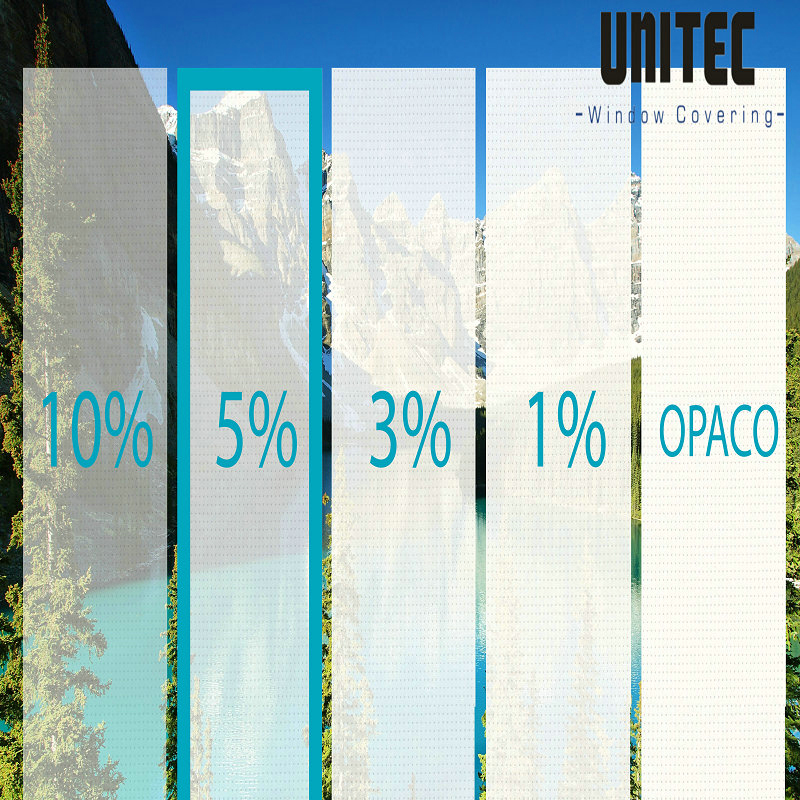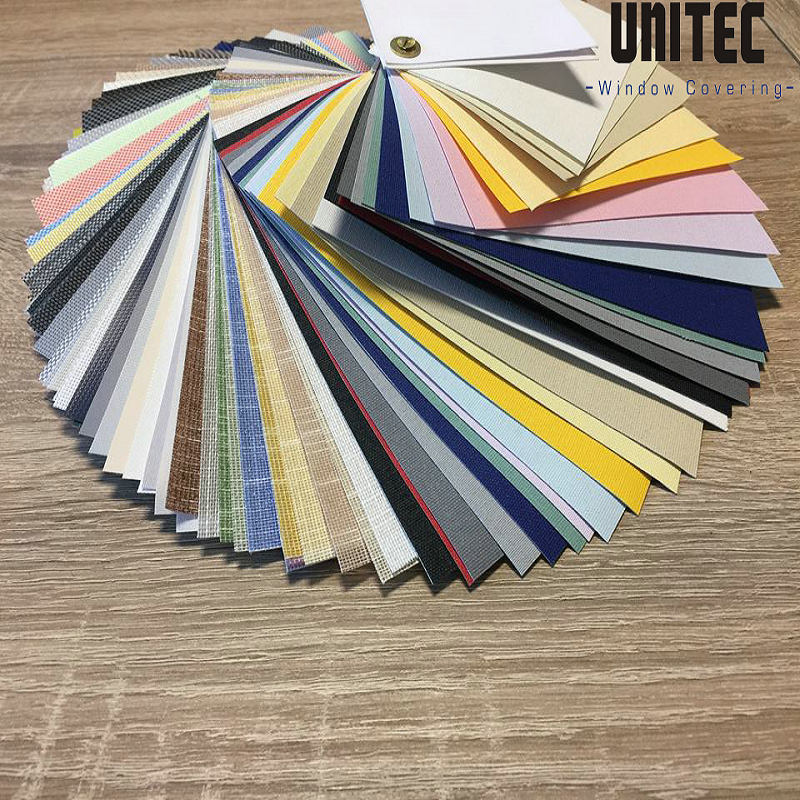Ideal fabric type for roller blinds
Ideal fabric type for roller blinds
There are different types of roller blind fabrics. The production of the ideal roller blind mainly depends on the fabric it is made of. Therefore, it is recommended to understand all this knowledge to discover existing features and differences.
Classification of different types of roller blinds:
Opaque roller blind
The opaque roller blind includes an opaque fabric weave. A fabric used for roller blinds, which can 100% prevent light from passing through. Used in places where dark privacy is required, such as bedrooms, offices and other environments.
The composition of the opaque roller blind is PVC coated glass fiber. It is a flame-retardant material and is easier to clean with a damp cloth. In this case, its opacity is complete.
There are many colors to decorate the room according to the decoration required.
Translucent polyester roller blind
Translucent polyester roller blinds are a kind of fabric used for translucent blinds, and its composition is different from the silk screen sunscreen fabric. Its main feature is that it allows light to pass through and prevents visibility. They are colored and very economical fabrics.
According to the weight per square meter, the weight per square meter and the number of passes of the thread, we can find more or less opaque and translucent fabrics. This will also depend on the color.
The composition of the translucent polyester roller shutter is 100% polyester, which can be customized into a non-flame retardant material. As for cleaning, it can be done with a damp cloth.
Sun protection roller blind fabric
Sun protection roller blinds are one of the latest generation of technical fabrics. It is made of glass fiber or polyester weaving and covered with PVC. This type of fabric is used for sun protection, but depending on whether the sun protection roller blind is closed or open, they will allow light to pass through more or less.
Transparency of sunscreen roller blinds (open)
When making this type of fabric, very thin filaments will be twisted together to form a uniform fabric, and the spacing between the threads will determine the degree of light entering the interior. This is what we call the aperture factor (or screen aperture factor).
If we analyze the different types of sunscreen roller blinds according to the opening factor, we will find that some sunscreen roller blinds have more holes than others. The more holes on the fabric, the higher its transparency, and the direct result is that the visibility will increase.
Among different types of holes, we can usually find lines ranging from 1% (most opaque) to 10% (most transparent).
Sunscreen roller blind type (according to its capacity)
As we have already pointed out, there are different types of screens based on the open percentage. Although the following cases are most commonly used, the range is 1% to 10%
10% higher transparency and higher external visibility.
5% medium transparency, best external visibility.
3% medium transparency, low external visibility.
1% minimum transparency and low visibility.
0% is opaque, no light is allowed to pass, and the external visibility is zero.
Other features of sunscreen roller blind fabric
The sunscreen roller blind fabric is different from the traditional plain weave roller blind fabric (polyester, acrylic, linen or cotton fabric). The screen has the characteristics of flame retardant fabric, which is especially suitable for public places, such as hospitals, schools, hotels and private buildings, such as houses. , Houses, companies, etc.
• The technically innovative fabric is made of glass fiber and PVC to prevent abrasion.
•Deformation resistance In this way, glass fibers can provide structural consistency, so that the fabric can maintain its natural shape at high temperatures, thereby preventing its deformation.
•Protection and solar filter screen can filter the sun, so we can protect the furniture, electronic equipment and floors in the home or office, and prevent sun wear
